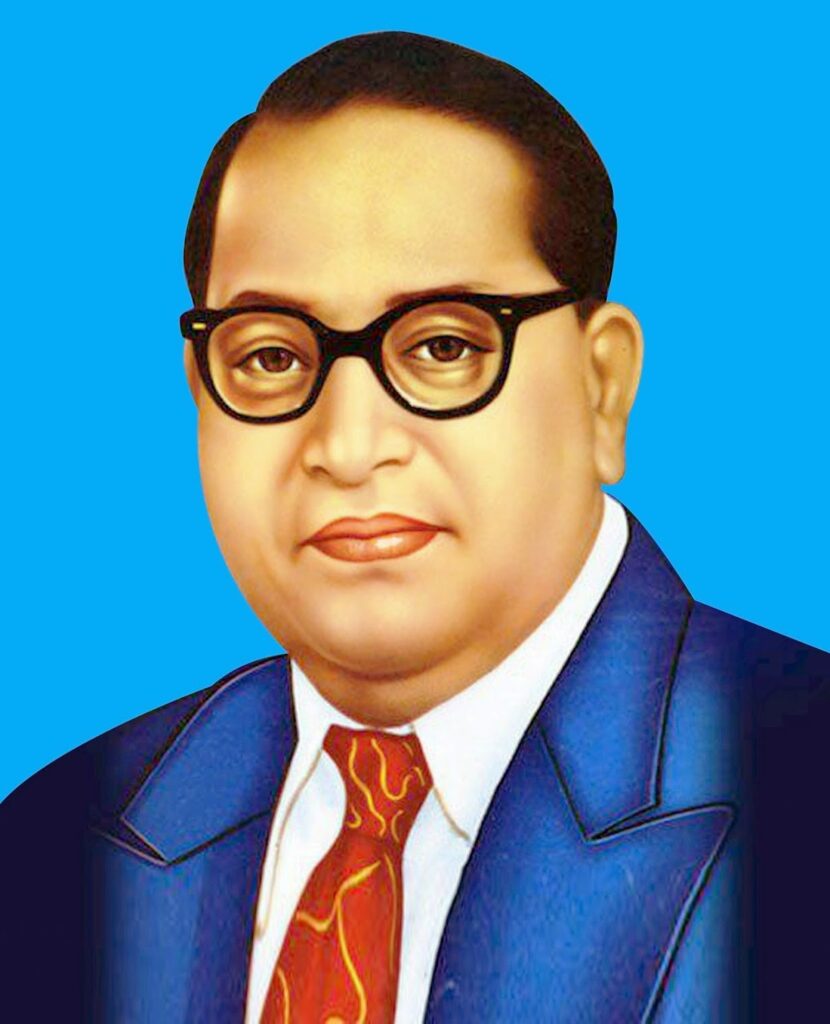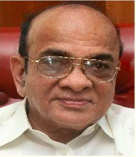While most of us have regarded Dr. B.R. Ambedkar as having played a major role in the drafting of the Constitution which provided for the Parliamentary system, it is significant to note that just seven months prior to his being appointed Chairman of the Drafting Committee of the Constitution, i.e., in March 1947, Ambedkar had himself strongly endorsed the Presidential system of democracy.
As mentioned by him in the memorandum to the Constituent Assembly’s sub-committee on fundamental rights, The British Cabinet System has undoubtedly given the British people a very stable system of government. Question is, will it produce stable governments in India? The chances are very slender. In view of the clashes of castes and creed, there is bound to be a plethora of parties and groups in the legislatures in India. If this happens, it is possible, nay certain, that under the system of Parliamentary democracy like the one that prevails in England, under which the Executive is bound to resign upon an adverse vote in the legislature, India may suffer from instability of the Executive. For it is the easiest thing for groups to align and realign themselves at frequent intervals and for petty purposes, and bring about the downfall of the government. The present solidarity of what are called major parties cannot be expected to continue. Indeed, as soon as the problem of the British in India is solved, the cement that holds these parties together will fail away. Constant overthrow of the government is nothing short of anarchy.’ He had further added, ‘Taking all these considerations together, there is no doubt that the British type of the Executive is entirely unsuited to India. Indians who are used to the English form of the Executive forget that this is not the only form of democratic and responsible government. The American form of Executive is an equally good type of democratic and responsible form of government.’
Why the U-turn, then?
While Ambedkar had whole-heartedly endorsed the Presidential system upon being appointed Chairman of the Drafting Committee, he seemed to have changed his viewpoint in support of Parliamentary democracy.
Ambedkar’s advocacy in favour of the Parliamentary system later on mainly revolved around the concept of ‘responsibility versus stability.’ According to him, if there was a guarantee of tenure (as in the Presidential system), the government could be prone to behave arbitrarily as against the Parliamentary system, wherein the government would behave more responsibly on account of a fear of losing the majority in Legislature. Says Bhanu Dhamija in his book, Why India needs The Presidential System, “According to Ambedkar, it was not possible to have a system that guaranteed both, a government staying in power, while at the same time staying responsible. Therefore, one has to choose. The choice they had made is to have a government that was more responsible at the expense of it being less stable. The reason all executive and legislative functions were fused into one centre of power was to ensure that the entire government fell if it behaved irresponsibly. He argued that multiple centers of power diluted the government’s accountability, and therefore it was best to deny the President any powers.”
Some members were astonished at how Ambedkar had relinquished his long-held views against the Parliamentary system. Hussain Imam, a member of the Constituent Assembly from Bihar, took exception to the fact that in his presentation to the Assembly, Ambedkar was less than forthcoming about the strengths of the US Presidential system. He noted that he was “‘surprised that a learned pundit of constitutional law like Dr. Ambedkar should have skipped over the fact that the responsibility of the non-parliamentary executive is not less than that of the parliamentary executive. If it is examined, it will be found that the committees of the House of Representatives and the Senate in USA exercise far greater control than the control exercised by the House of Commons.”
“I was really surprised to hear Dr. Ambedkar while he was introducing the Draft Constitution,” said a bewildered Kazi Syed Karimuddin, “praising the system of parliamentary executive, while in his book States and Minorities, he has advocated that the system of non-parliamentary executive is best suited to protect the minorities…” Another member reminded Ambedkar what he himself thought of legislative bodies. ‘I will use his own words,” said Z. H. Lari. “It was wiser not to trust the legislatures to prescribe forms of administration.” With respect, I say he is mainly right.
Our experience of the actual performance of the system in the last seven decades has clearly established that the founding fathers of our Constitution had failed to visualise the ground realities that were likely to occur in the model adopted by us. There is neither accountability nor responsibility; instead, the lust and greed to grab and enjoy the fruits of power have been the hallmarks of the system adopted by us. In fact, separation of powers along with the direct election of the Executive heads of government at all levels (city, state and nation), in addition to a freedom to induct the best talent, provides for far better assessment of the Executive by the Legislature than our model, where there is neither the accountability nor the responsibility of either the Executive or the Legislature.
Ambedkar disowned the Constitution?
Within three years of the adoption of India’s Constitution, Ambedkar seemed to have expressed his own frustration in no uncertain terms when he spoke in Rajya Sabha on 2nd September, 1953. “Sir, my friends tell me that I have made the Constitution. But I am quite prepared to say that I shall be the first person to burn it out. I do not want it. It does not suit anybody.” There is an aura surrounding Ambedkar as the framer of India’s Constitution. His own clarification of the role played by him in this regard is quite significant. In this very speech in Rajya Sabha, he has reported to have said:”People always keep on saying to me: ‘Oh, you are the maker of the Constitution.’ My answer is “I was a hack. What I was asked to do, I did much against my will.” As the House was brought to order, K. S. Hegde, who was also a Supreme Court judge in the latter part of his career, expressed shock: “It came with ill grace from Dr. Ambedkar when he said that his heart was not in the Constitution, that he was merely perpetuating a fraud, to put it in the mildest form.”
Within seven years of framing India’s Constitution, Ambedkar passed away in 1956. Had he lived long enough to watch the performance of the system and the political developments that took place in the subsequent years, his frustration would have reached such a level that in all probability he would have taken the lead to revamp the Constitution in favour of the Presidential System, which he had strongly endorsed earlier.
In fact, apart from Ambedkar, Dr. K.M. Munshi, a leading member of Constituent Assembly who had endorsed parliamentary democracy had also changed his mind in favour of presidential democracy. As stated by him (in 1964), ‘If I had to make a choice again, I would vote for the Presidential form of Government so that, whenever the politicians fail the country there is at least one strong organ of the State capable of tiding over the crisis.’
Dr. Rajendra Prasad, who was India’s first President and was also President of the Constituent Assembly, after having watched the performance of our legislature, had commented: “It often happens that (in the U.S.A.) the Democrats support the (Republican) President not only by their votes, but also by their speeches. Similarly, it also often happens that the Republican members vote and speak against proposal by the President who belongs to their party. It means that the members are elected like the President on party tickets but after election they cease, in practice, to belong to the party and act in a way which they consider best for the nation. It may therefore be said truly that they have always a national Government and not a party Government in office. We must investigate and find if this analysis is correct. If so, we must then consider how far we are right in copying the British party system in all its details.”
Ex-President Dr. Venkataraman, who was also a member of the Constituent Assembly, had in fact moved a resolution in an AICC session in 1965 to change the Constitution in favour of Presidential democracy. The object of the move as narrated was “considering the increasing instability and weakness in administration caused by the growth of dissidents and groupism in the legislative parties in the country, considering the tendency towards the multiplicity of parties springing up like mushrooms incapable of giving the country an alternative stable government, considering the grave dangers to the territorial integrity of India from the threats of aggression from our neighbours and realising the imperative need for stable governments, both at the Centre and States, the All-India Congress Committee resolved that the Congress Working Committee may be requested to constitute a Committee to examine and report whether the present Cabinet form of Government at the Centre and States may be replaced by an Executive, directly elected by the people for a fixed term of years; and if so, to recommend consequential changes in the Constitution of India as appropriate”.
Our Parliamentary model has failed to provide for better governance due to its inherent weaknesses. We have mind boggling scams such as 2G Spectrum, Coalgate, Common Wealth Games and many others where even an honest Prime Minister, in the absence of an absolute majority in the Parliament, remained a helpless and mute spectator as he had to ‘compromise in coalition politics’ as candidly agreed by Prime Minister Manmohan Singh. On the other hand, a Prime Minister belonging to the ruling party having an absolute majority tends to behave in an autocratic manner. He enjoys far more powers than the President of U.S.A. where even the members of his own party are in a position to provide required checks on the President because of the freedom and separation of Executive from the Legislature. It is time now to seriously consider the truly democratic Presidential system for better governance.


 [/column]
[/column]